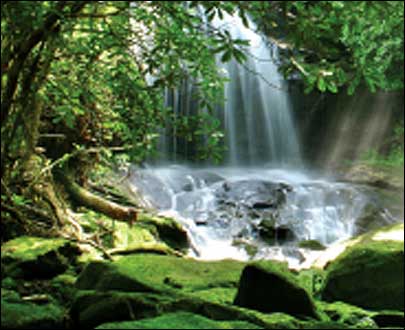Barro Colorado Island, a nature preserve in Panama administered by the Smithsonian Tropical Research Institute, is one of the most studied rainforest ecosystems in the world. But keeping track of environmental changes deep inside the rain forest has been difficult and expensive, says Arturo Sanchez-Azofeifa, a professor at the University of Alberta’s Department of Earth and Atmospheric Sciences. “In the past,” he says, “we’ve used sensors with cables that often get cut by people traveling through the rain forest and using machetes to clear their paths, or chewed by animals.”
Now, wireless-sensor networks—intelligent RFID tags that send and receive sensor data by forming ad hoc networks—will be the eyes and ears of researchers in the rain forest. But finding sensors that would work in the jungle wasn’t easy, Sanchez-Azofeifa says. Olsonet, an Ottawa-based startup, created a customized solution that includes secure housing for the sensors, so they could withstand the rigors of the moist environment and its many inhabitants. “You don’t want monkeys stealing the sensors,” says Pawel Gburzynski, chief scientist at Olsonet and a professor at the University of Alberta’s Department of Computing Science.

The researchers will deploy hundreds of the battery-powered sensors at varying heights—from the jungle floor to high in the tree canopy—that will communicate in the ultrahigh-frequency band using a proprietary protocol. The sensors will collect environmental data—for instance, light and temperature—and send it to a main aggregator, which will process the data and forward it to a gateway, such as a laptop with Internet connectivity.
Sanchez-Azofeifa says the greatest benefit of using wireless-sensor networks to track conditions inside the rain forest will be the constant remote connectivity they’ll provide. Researchers will be able to monitor and analyze the data that the sensors collect without having to travel to the rain forest, saving time and money, and allowing the team to pursue multiple projects simultaneously from their home base.
Sanchez-Azofeifa and his team plan to deploy the sensor system—which is currently being vetted in a building that houses the university’s agriculture and forestry departments, as part of a demonstration project dubbed Econet—this fall. The system will combine location and environmental data and plot it on a three-dimensional grid, creating an MRI of the forest. Sanchez-Azofeifa says he has a network of research partners in the Amazon who are following the project closely, because they’re keen to deploy the sensors there for similar studies.

